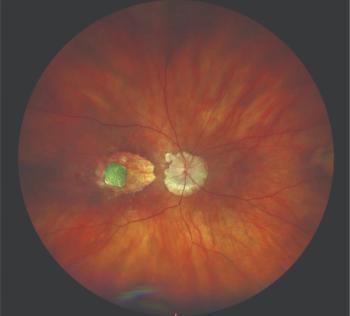
Investigators discover cause, develop pharmacological treatment for reducing retinitis pigmentosa vision loss
A team of investigators at the University of California, Irvine have found that inhibiting ceramide accumulation in retina protects photoreceptors improves vision
Ivestigators from the University of California, Irvine (UCI) have discovered that the absence of Adiponectin receptor 1 protein (AdipoR1), one of the principal enzymes regulating ceramide homeostasis in the retina, leads to an accumulation of ceramides in the retina, resulting in progressive photoreceptor cell death and ultimately vision loss.
According to a news release from the university, the team also found that a combination of desipramine and L-cycloserine reduced lowered ceramide levels, which protected photoreceptors, helped preserve the retina’s structure and function, and improved vision.
The study, titled “Inhibition of ceramide accumulation in AdipoR1-/- mice increases photoreceptor survival and improves vision,” was published this month in the
The UCI release noted that study findings show that ceramide imbalance damages the neural retina and retinal pigmented epithelium, accompanied by a significant reduction of electroretinogram amplitudes, decreased retinoid content in the retina, reduced cone opsin expression and massive inflammatory response. A buildup of ceramides in the retina, likely due to insufficient ceramidase activity, led to photoreceptor death. When treated with the desipramine and L-cycloserine combination, ceramide levels were lowered, which helped preserve photoreceptors in mice.
The UCI team also observed improved daylight vision in the L-cycloserine treated mice, and that prolonged treatment significantly improved electrical responses of the primary visual cortex to visual stimuli.
“Although AdipoR1 is found in multiple organs, the highest levels are found in the eye and brain, suggesting its critical importance in these neural tissues. Krzysztof Palczewski, PhD, Donald Bren Professor of Ophthalmology at the UCI School of Medicine and co-corresponding author, said in the news release. “Our study results highlight the significance of AdipoR1 ceramides in the retina, and show that pharmacological inhibition of ceramide generation can provide a therapeutic strategy for patients suffering from retinitis pigmentosa or AdipoR1-related retinopathies.”
According to the university, regeneration of photoreceptor cells and retinal pigment epithelium is the underlying cause of several progressive retinal diseases. Many of these conditions have only minimally effective or no treatment options. New therapeutic approaches are urgently needed to combat these disorders and reduce vision loss.
The UCI news release noted that ceramides are essential for eukaryotic cell membrane stability and act as potent signaling molecules in inflammation, cell cycle arrest, cell death and heat shock response pathways. Ceramide imbalance has also been found in cancer, Alzheimer’s disease, type 2 diabetes, multiple sclerosis, cardiovascular disease and non-alcoholic fatty liver disease.
“Noninvasive pharmacological treatment is more easily achieved in humans than gene therapy,” first and co-corresponding author Dominik Lewandowski, PhD, postdoctoral scholar at the UCI School of Medicine said in the news release. “Our proposed pharmacological strategy might become broadly applicable to other neurodegenerative conditions related to high ceramide levels.”
This work was supported by by funding from the National Institutes of Health under grants R24EY027283, NEI: F30 EY031566, and T32GM007250; and the Audacious Goals Initiative for Regenerative Medicine, a National Eye Institute program to push the boundaries of vision science and restore vision through regeneration of the retina, under grants P30 014195, and 1S10OD021815-01, and the Helmsley Center for Genomic Medicine.
Newsletter
Don’t miss out—get Ophthalmology Times updates on the latest clinical advancements and expert interviews, straight to your inbox.





